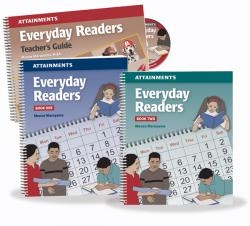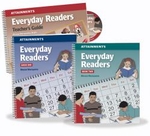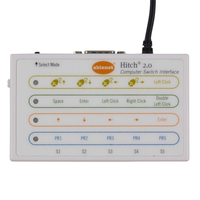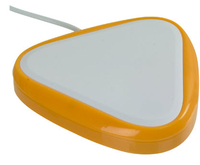Everyday Readers Curriculum

Description
A collection of 36 photo-illustrated stories for concepts including counting, health, and language.
Everyday Readers Curriculum features a collection of
36 stories, one for each week of the school year. They incorporate
educational concepts—like counting, health, and language skills—and are
intended to be read aloud to young students, ages 4–9. The Curriculum
includes two Everyday Readers storybooks and a Teacher’s Guide.
The photo-illustrated stories range from 6–10 pages each, with about
25 words per page. Photos highlight story characters and other elements
in the narrative, encouraging students to follow along and understand
the storyline. Stories end with a three-question comprehension activity.
Stories follow a chronological sequence so you can present seasonal
themes and events.
Everyday Readers is a great way for teachers to organize storytime in their classroom and present high interest topics with strong educational themes.
The Introductory Kit includes Everyday Readers Books One and Two, Teacher’s Guide with a PDF on Win/Mac CD, and a Classroom License for printouts. The Classroom Kit includes five sets of Everyday Readers Books, plus all other items in the Introductory Kit.
By Monae Maruyama, an SLP and special educator, with an emphasis on autism instruction. Spiralbound books, 2015. Book 1, 143 pages, Book 2, 154 pages, and Teacher's Guide, 154 pages.
Everyday Readers Curriculum
- Publisher: Attainment Company
- Grade Level: All
- Item #: EDR-10W
| Curriculum Kit #EDR-10W |
Price: $97.00 SRP: $99.00 | |
| Classroom Kit #EDR-20W |
Price: $289.00 SRP: $299.00 |
Features and Benefits
Product Features:
- Provides a weekly read aloud for young students ages 4-9
- Stories range from 6-10 pages, have approximately 25 words per page, and include three comprehension test questions
- Features simplified text and photos that highlight key elements of each story
- Stories follow a chronological sequence based on seasonal themes and events
The Teacher’s Guide provides lesson plans for each story—complete with teacher scripts, student learning objectives, and story page illustrations. The Guide also includes additional vocabulary and sequencing activities, which can be printed out from the PDF CD. Each sequencing activity is differentiated by difficulty: in Level 1, students point to photos that belong in the story; in Level 2, students use the photos to retell the story in sequence; students select a photo, then tell an original story in Level 3.






